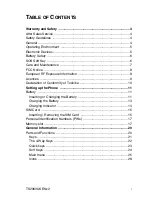
LGE Internal Use Only
Copyright © 2008 LG Electronics. Inc. All right reserved.
Only for training and service purposes
- 19 -
3.2.2 Transmitter
The UMTS Tx path begins with differential baseband signals (I and Q) from the MSM device. These
analog input signals are amplified, filtered, and applied to the quadrature up-converter mixers. The up-
converter output is amplified by multiple variable gain stages that provide transmit AGC control. The
AGC output is filtered and applied to the driver amplifier; this output stage includes an integrated
matching inductor that simplifies the external matching network to a single series capacitor to achieve
the desired 50-Ω interface.
The RTR6275 UMTS output is routed to its power amplifier through a bandpass filter, and delivers fairly
high-level signals that are filtered and applied to the PA. Transmit power is delivered from the duplexer
to the antenna through the switch module. The transceiver LO synthesizer is contained within the
RTR6275 IC with the exception of the off-chip loop filter components and the VC-TCXO. This provides
a simplified design for multimode applications. The PLL circuits include a reference divider, phase
detector, charge pump, feedback divider, and digital logic generator.
UMTS Tx. Using only PLL1, the LO generation and distribution circuits create the necessary LO signals
for nine different frequency converters. the UMTS transmitter also employs the ZIF architecture to
translate the signal directly from baseband to RF. This requires FLO to equal FRF, and the RTR6275 IC
design achieves this without allowing FVCO to equal FRF. The RTR6275 IC is able to support UMTS
2100/1900 and UMTS 800 mode transmitting. This design guideline shows only UMTS 2100/1900 and
UMTS 800 applications.
WCD
WCDMA_2100_TX
A_2100_TX
WCD
WCDMA_800_T
A_800_TX
Fig.3.2-3 RTR6275 IC
functional block
diagram
Z3X-BOX.COM
Summary of Contents for L705ix
Page 185: ...Note Z 3 X B O X C O M ...
Page 186: ...Note Z 3 X B O X C O M ...
















































